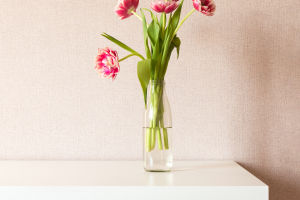Is it necessary to water potted plants daily? This is a common question, especially for those new to gardening.
Whether it is necessary to water every day depends on many factors, including the type of plant, the type of soil, the humidity, and the temperature of the environment.
First, it's important to understand that different potted plants have varying water requirements. Some plants prefer a humid environment, such as ferns and most foliage plants, which need frequent watering to keep the soil moist.
In contrast, some plants, like cacti and succulents, are adapted to dry environments and can store water, so they don't require frequent watering. Usually, watering once in a while is enough for these types of plants.
Secondly, the type of soil will also affect the frequency of watering for potted plants. Well-drained soil, such as sandy soil, loses water easily and therefore needs to be watered more frequently. Clay soil has strong water retention properties and can reduce the frequency of watering.
Potting soil is usually a mixed soil that has a certain degree of drainage while retaining an appropriate amount of water, making it suitable for the growth of most potted plants.
The humidity and temperature of the environment are also important factors in determining the frequency of watering. In a hot and dry environment, water evaporates quickly, and plants need more water to maintain growth.
Therefore, in summer or in an indoor environment with full heating, you may need to increase the frequency of watering. On the contrary, in an environment with high humidity or low temperature, the plant's demand for water decreases, and watering can be appropriately reduced.
How can you determine if your potted plants need watering? The easiest way is to touch the soil. Gently insert your finger into the soil about 2-3 cm. If you feel the soil is moist, you don't need to water it for the time being; if you feel the soil is dry, you need to water it.
Additionally, the state of some plant leaves can also be used as a criterion for judgment. For example, drooping, softening, or dull-colored leaves are usually signals of water shortage.
Overwatering is also a common problem for potted plants. Many people worry about plants withering from lack of water and end up watering too frequently.
However, too much water will cause the soil to remain wet for a long time, leading to a lack of oxygen in the roots, which can easily cause root rot and eventually lead to plant death. Therefore, watering should be appropriate and adjusted according to the specific needs of the plant and environmental conditions.
To help plants absorb water better, you can pay attention to the following points when watering. First, it is best to water in the morning or evening when the temperature is lower, and the water is not as likely to evaporate quickly, which helps the plant absorb it more efficiently.
Secondly, water evenly and thoroughly to ensure that the water can penetrate the roots. Additionally, avoid direct watering with cold water, especially in summer, as this can cause cold shock to the roots of plants and affect growth. It is recommended to use water at room temperature.
Some plants can also benefit from increased humidity by spraying water, especially in dry environments. Spraying water can not only increase air humidity but also clean the leaves and promote photosynthesis.
However, be careful not to spray water too frequently to avoid the leaves remaining wet for a long time, which can cause mold growth.
For busy people, using an automatic watering device can be a good solution. This ensures that the plants get enough water even when you are not at home. There are many types of automatic watering devices, from simple drip devices to intelligent control systems, which can be selected according to actual needs.
Understanding the specific needs of plants and reasonably adjusting the frequency of watering is key to maintaining the healthy growth of potted plants. Through scientific watering methods, we can make plants thrive in different environments and bring more green and vitality.


